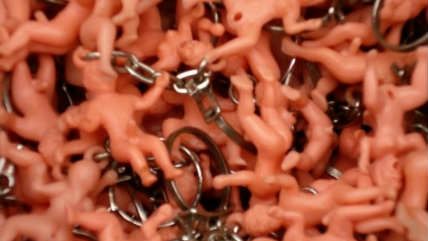Analysis Shows We're Talking About Prostitution More Than Ever Before
Study of sexual lingo in literature and historical documents shows shifting social concerns when it comes to sex.


A new analysis from the website DrEd.com charts the usage of various sex-related words in English-language literature, nonfiction, and historical documents between 1810 and 2009. The results offer some stats that modern audiences may find surprising—for instance, use of the word condom peaked in the early 1800s. The words virginity and pornography, meanwhile, peaked in the early 1990s. One result that I found particularly notable: use of the word prostitution spiked in the early aughts, reaching its 200-year peak in 2009.
Before this, the word's peak usage occurred around 1980. Among the 10 words most frequently found within 10 words of prostitution were child, gambling, house, religious, pornography, and narcotics.
DrEd.com conducted the analysis using the Corpus of Historical American English, a collection of more than 100,000 historical texts (totaling 400 million words) dating back to 1810. A few other interesting findings:
• The word sexual peaked in the early 1800s, when it was commonly used in conjunction with the words age, women, and education. After going out of fashion for a while, its reemergence in the 1960s through today has been most closely associated with the words discrimination, offenders, and partners.
• Homosexuality started popping up in the 1920s, really hitting its stride in the '60s-'90s, when it was frequently found near the words abortion, adultery, incest, and divorce.
• Among the 10 words most frequently found near pornography were obscenity, child, censorship, prostitution, and sadistic.
• The word orgasm didn't appear frequently until the 1930s, around the same time pornography appeared.
• In the 1950s and '60s, the word penis was frequently associated with the words mother and envy.


Show Comments (56)